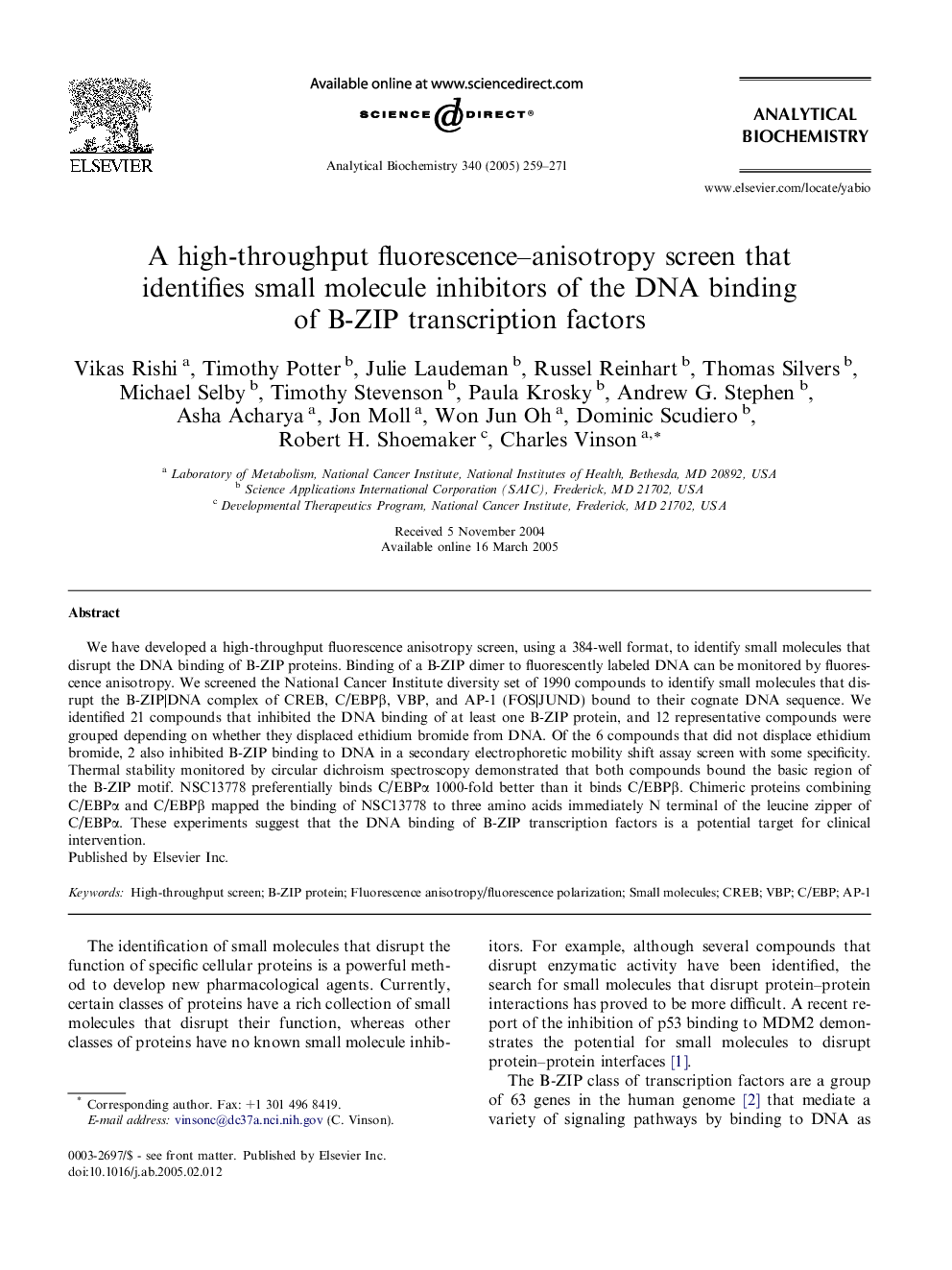| Article ID | Journal | Published Year | Pages | File Type |
|---|---|---|---|---|
| 9744925 | Analytical Biochemistry | 2005 | 13 Pages |
Abstract
We have developed a high-throughput fluorescence anisotropy screen, using a 384-well format, to identify small molecules that disrupt the DNA binding of B-ZIP proteins. Binding of a B-ZIP dimer to fluorescently labeled DNA can be monitored by fluorescence anisotropy. We screened the National Cancer Institute diversity set of 1990 compounds to identify small molecules that disrupt the B-ZIP|DNA complex of CREB, C/EBPβ, VBP, and AP-1 (FOS|JUND) bound to their cognate DNA sequence. We identified 21 compounds that inhibited the DNA binding of at least one B-ZIP protein, and 12 representative compounds were grouped depending on whether they displaced ethidium bromide from DNA. Of the 6 compounds that did not displace ethidium bromide, 2 also inhibited B-ZIP binding to DNA in a secondary electrophoretic mobility shift assay screen with some specificity. Thermal stability monitored by circular dichroism spectroscopy demonstrated that both compounds bound the basic region of the B-ZIP motif. NSC13778 preferentially binds C/EBPα 1000-fold better than it binds C/EBPβ. Chimeric proteins combining C/EBPα and C/EBPβ mapped the binding of NSC13778 to three amino acids immediately N terminal of the leucine zipper of C/EBPα. These experiments suggest that the DNA binding of B-ZIP transcription factors is a potential target for clinical intervention.
Related Topics
Physical Sciences and Engineering
Chemistry
Analytical Chemistry
Authors
Vikas Rishi, Timothy Potter, Julie Laudeman, Russel Reinhart, Thomas Silvers, Michael Selby, Timothy Stevenson, Paula Krosky, Andrew G. Stephen, Asha Acharya, Jon Moll, Won Jun Oh, Dominic Scudiero, Robert H. Shoemaker, Charles Vinson,
